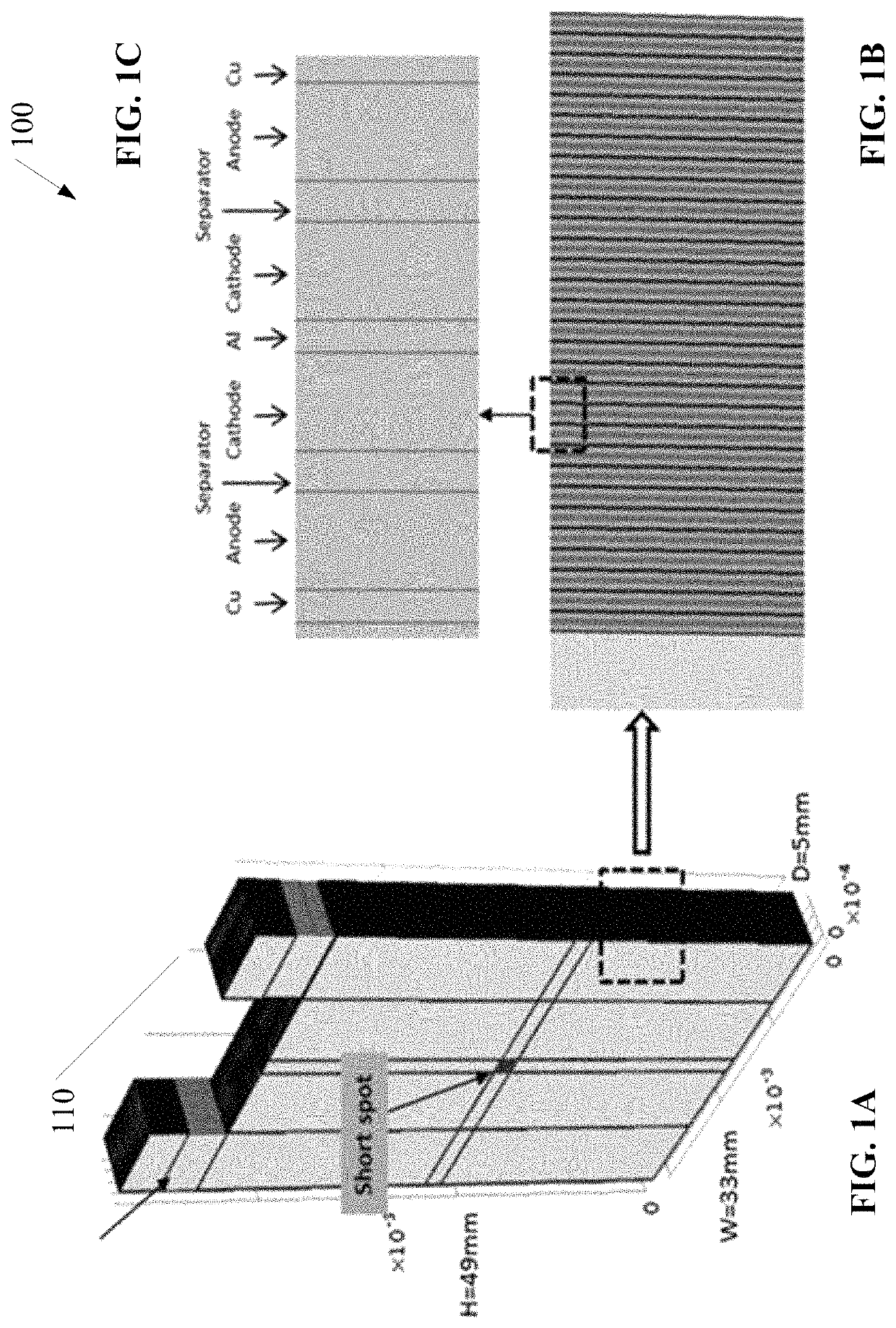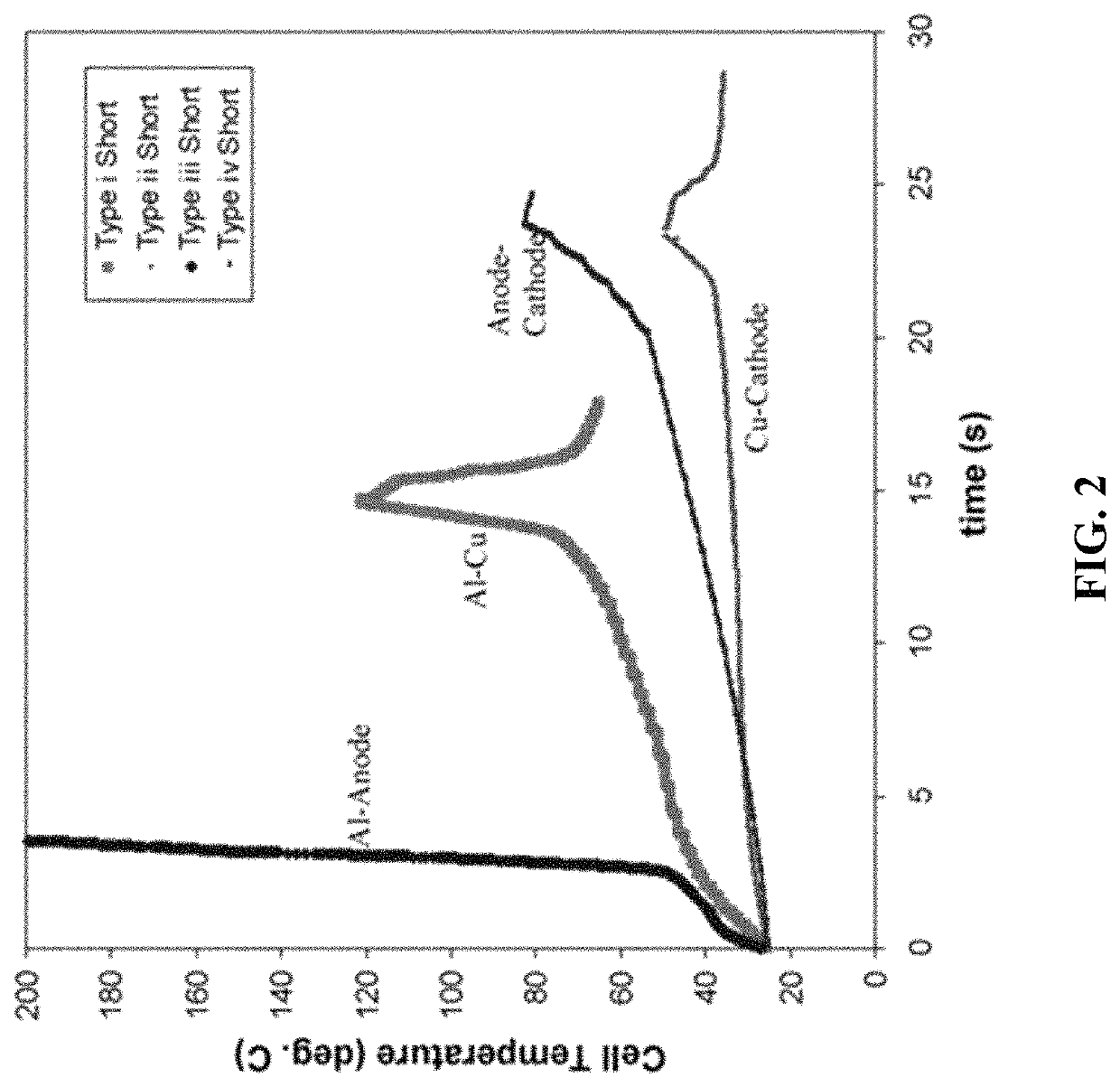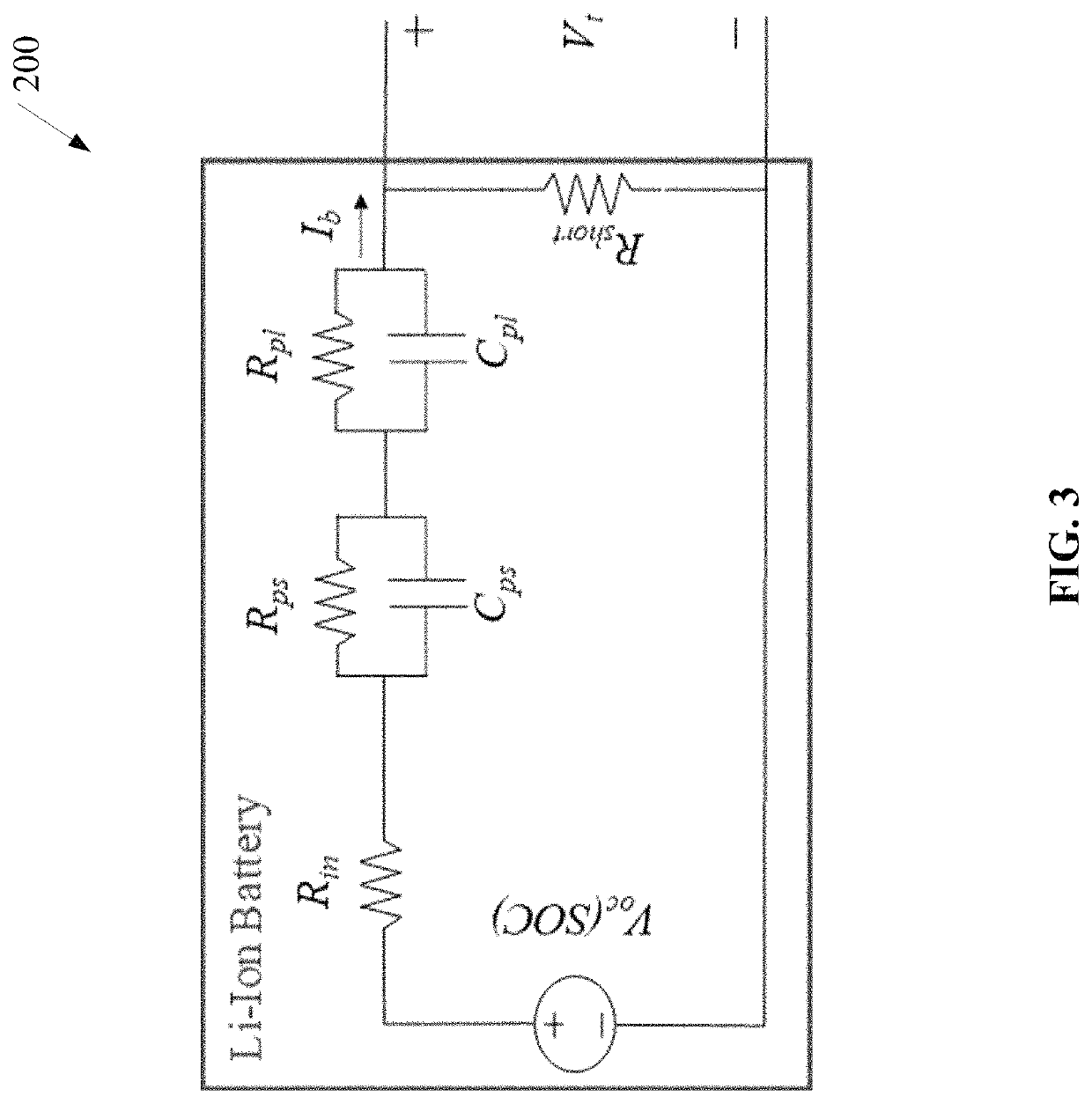Fast and precise detection of an internal short circuit on a lithium-ion battery
a lithium-ion battery and short circuit detection technology, applied in secondary cell servicing/maintenance, instruments, electrochemical generators, etc., can solve the problems of catastrophic damage to the battery itself and the surrounding environment of the battery, and achieve the effect of increasing the sensitivity of isc detection
- Summary
- Abstract
- Description
- Claims
- Application Information
AI Technical Summary
Benefits of technology
Problems solved by technology
Method used
Image
Examples
Embodiment Construction
[0042]LIBs come in various shapes. FIGS. 1a-1c show slab-shaped structures of an exemplary LIB 100. FIG. 1a illustrates an exemplary structural view of a slab LIB, where the illustrated dimensions H, W, D are in mm, but these dimensions are not limited to the sizes listed. The terminals of the battery are denoted by 110. FIG. 1b illustrates a cross-sectional view of a slice of the battery showing multiple pairs of anodes and cathodes, and a corresponding separator between each pair of electrodes. FIG. 1c illustrates a more detailed view of one cycle of the anodes and associated copper current collector, the cathodes and associated aluminum current collector, and the separators as these structures are layered in the battery.
[0043]There are four different types of ISCs in LIBs caused by: anode electrode to cathode electrode contact (e.g., which may result from direct contact between anodes and cathodes, for example, as a result of separator puncture), anode electrode to positive curre...
PUM
| Property | Measurement | Unit |
|---|---|---|
| resistance | aaaaa | aaaaa |
| resistance | aaaaa | aaaaa |
| charging current | aaaaa | aaaaa |
Abstract
Description
Claims
Application Information
 Login to View More
Login to View More - R&D
- Intellectual Property
- Life Sciences
- Materials
- Tech Scout
- Unparalleled Data Quality
- Higher Quality Content
- 60% Fewer Hallucinations
Browse by: Latest US Patents, China's latest patents, Technical Efficacy Thesaurus, Application Domain, Technology Topic, Popular Technical Reports.
© 2025 PatSnap. All rights reserved.Legal|Privacy policy|Modern Slavery Act Transparency Statement|Sitemap|About US| Contact US: help@patsnap.com



